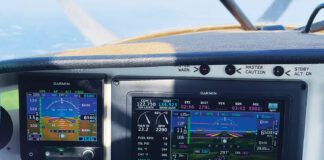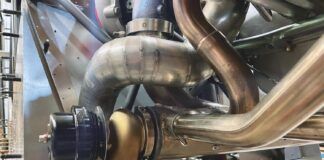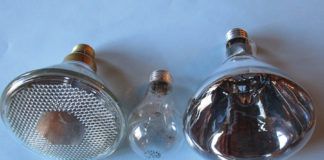A Life Saved
The article in the August issue, Fire in the Hole, about fire extinguisher systems was good about the history and where to get them, but left out a crucial part: the installation. Bob Fritz should have talked about installation and included pictures. In my installation, I needed three nozzles and used the tank size you show on Page 50. I had 7.5 pounds of Halon and total system weight of about 10 pounds. The ones pictured cost under $550. I had a mid engine with three cowl inlets. I had updraft cooling with two ducts coming in just under the cylinders and a NACA duct under the fuselage with a ground cooling fan mounted above the duct. All three nozzles were placed between the engine and inlets, allowing the incoming air to move the Halon around the engine. I mounted the tank at the bottom of the fire wall. I used a modified Hilborn fuel-injection system that required a lot of plumbing, and this was above the tank. A rupture happened somewhere in those lines, and the bottom nozzle helped in that area. Installation is easy, requiring a few hours. I think it saved my life!
Stan Burak
Calibrate Our Gauges
I have just had the opportunity to read the article by Stein Bruch regarding the use of steam gauges. I found the article most interesting, but there are a few clarifications that I believe are necessary. The sidebar with the photo of the Murphy Rebel panel states, The Mitchell engine gauges, which are repackaged VDO units… is simply not a correct statement.
Mitchell provides production instruments to a number of aircraft manufacturers and produces instruments that are either TSO or PMA approved. The majority of our products are FAA approved for use in commercially built aircraft, and Mitchell holds STC approval for a number of aircraft. Using gauges that are already FAA approved makes it easier for the homebuilder to get his aircraft signed off. Mitchell also manufactures an extensive line of miniature (1.5-inch square) gauges, which are completely manufactured in our Richmond, Illinois, facility.
VDO gauges are for automotive applications, and the successive parents of the VDO brand (Yazaki, Mannesmann, Siemens, Continental) have been most emphatic that VDO gauges are not to be used for aviation applications. They prohibit sale directly to any aircraft equipment manufacturer. Yes, we do use some VDO components which we buy under a special legal agreement with the parent company, but we buy components from a number of sources, and our gauges cover a wider range of products than the VDO label. The components we use are subjected to additional manufacturing steps, inspection and calibration before the Mitchell label is applied.
Mitchell sells FAA-approved gauges through distributors at the same low price as our non-approved gauges. All of our instruments are manufactured under the same FAA-approved quality and production system.
Also, the article commented about the poor reliability of instruments from China. There are other problems in addition to basic reliability. We have evaluated some of the basic airspeed indicators and altimeters from China. We have found errors among a given lot of altimeters as much as 400 feet, where certified units are 10 feet, and the ASIs are not repairable, as the dials are not uniform. We were told by the importer that the units are manufactured and then the dial marks are added to match the actual performance, as the units are not repeatable. The scale calibration points are different on every unit.
Robert Lasecki, President
Mitchell Aircraft Products, Inc.
Mmmm, That Smell…
Just read the latest Home Machinist article that was addressing the aluminum buildup on the cutting edge of the lathe tool bit. Having machined a few tons of aluminum during my toolmaking career, I found one of the best things to prevent the buildup and also improve the finish when cutting aluminum is WD-40. It doesn’t take much and smells a little, but its worth it. They even say it is good for arthritis…
Steve Dunn
Steamed Up?
Timing of the August 2008 article on steam gauges versus EFIS was perfect, as I am nearing panel layout commitment for my RV-9A project. Ive been planning to go IFR/steam gauges primarily because thats what I trained on and most familiar with. However, another major consideration that the article completely missed (and I am completely confused over) is: Do non-certified EFIS displays satisfy FAA requirements as standalone IFR flight instrumentation? I would greatly appreciate your help in my understanding of IFR flight instruments and these EFIS units.
Mike Rhodes
For Experimental applications, any of these instruments is sufficient for IFR. Remember that our category is not bound to use TSOd instruments, so an Experimental EFIS that covers the basic requirements found in FAR 91.205(d) will do the job. You also need a two-way radio and navigation equipment appropriate to the ground facilities being used. What about GPS? Heres a gotcha: In order to use an IFR-approved GPS for actual, no-kidding IFR, it has to be installed exactly to the requirements of the TSO that underpins its approval. That means, technically, if the install manual calls for specific annunciators, you need to use them to be strictly legal. Also, its prudent to have some backup instrumentation.-Ed.




